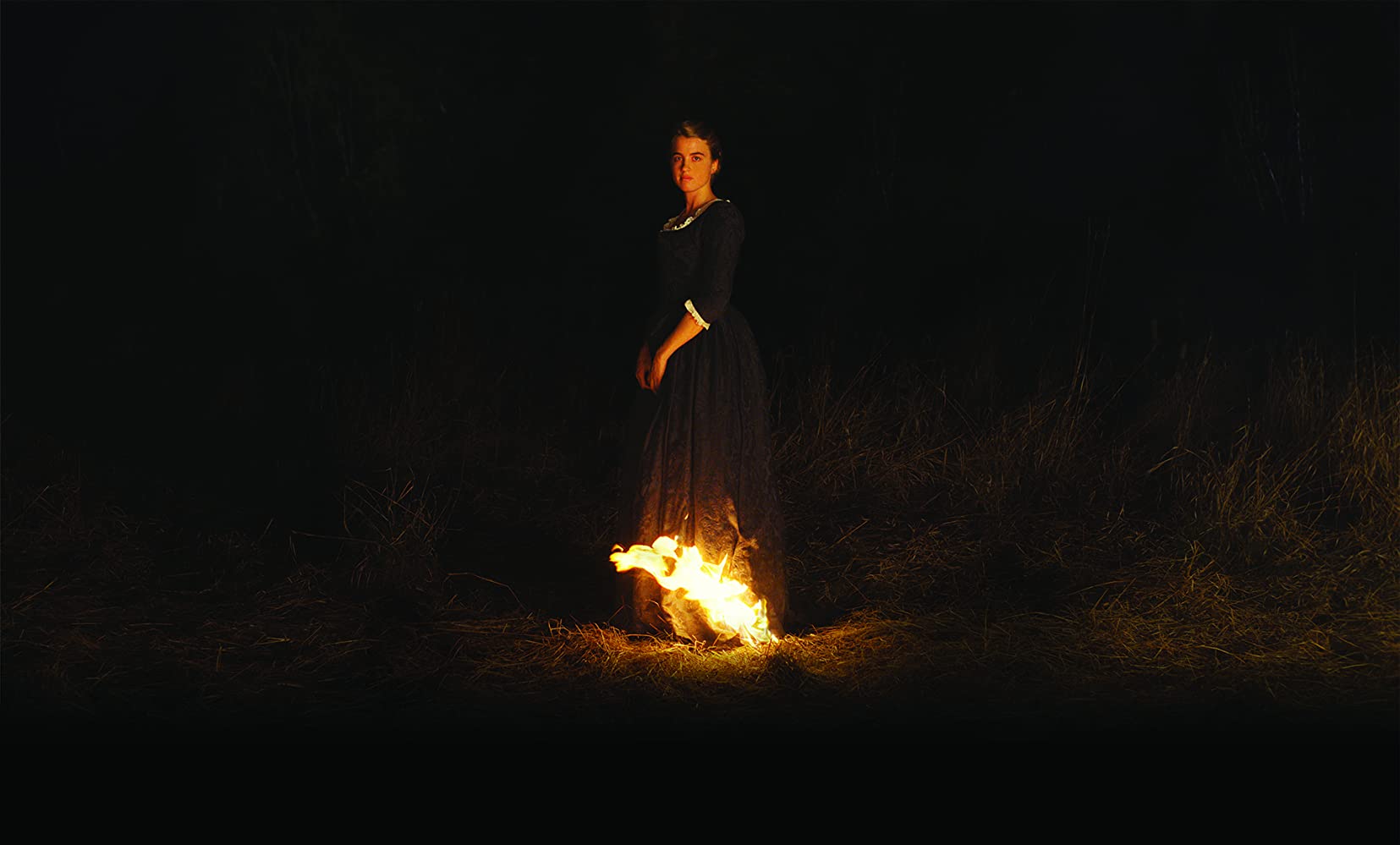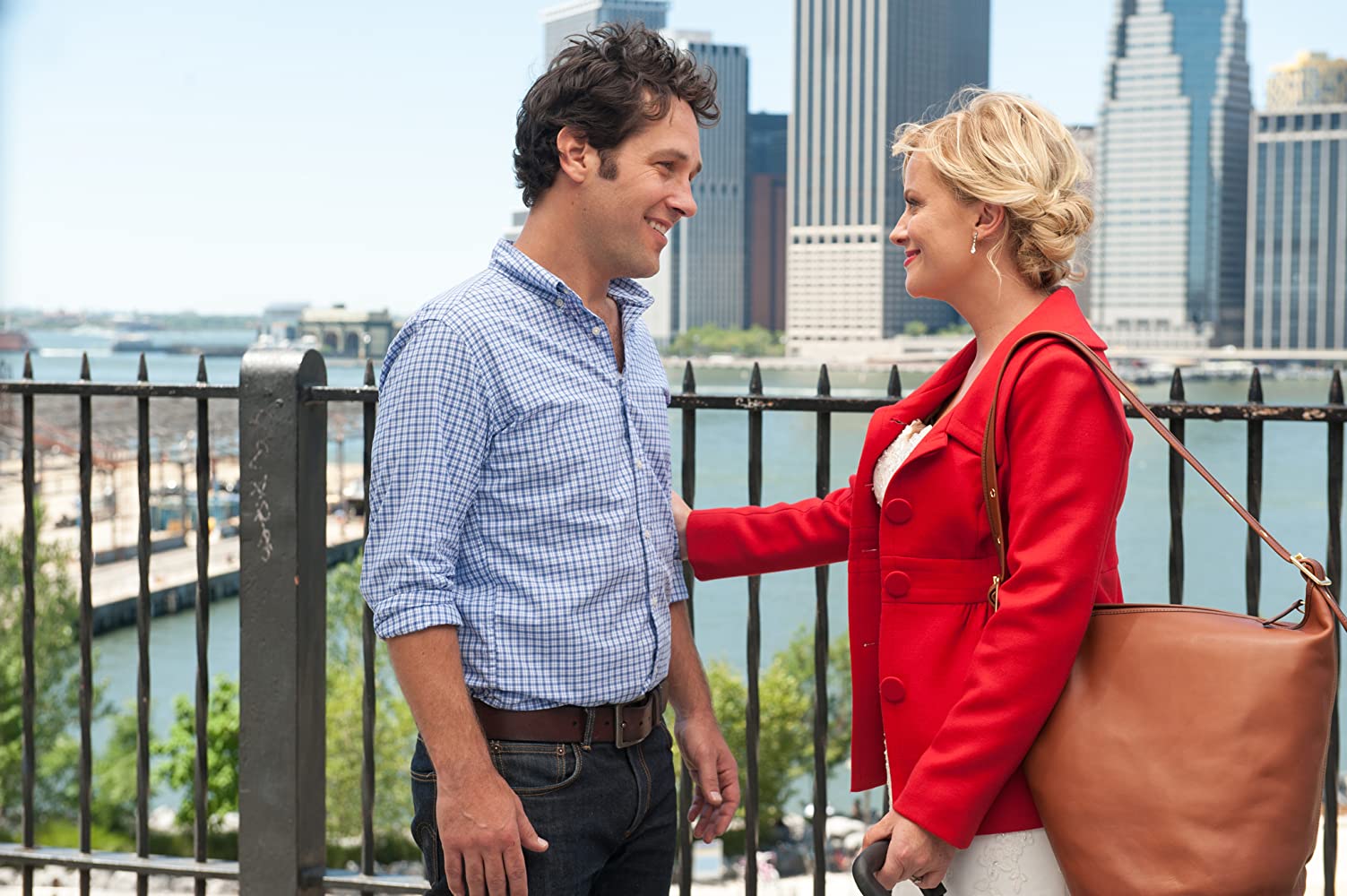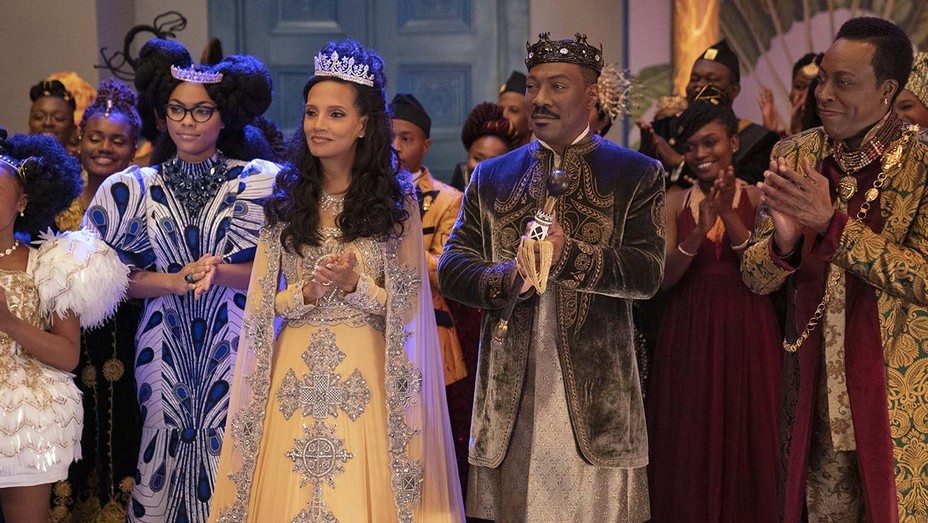Cannes gave this film a Best Screenplay award. I’ve had my clashes with Cannes in the past, but this one really seems above and beyond. Tell me, writer/director Céline Sciamma, did the screenplay include moments like: “INTERIOR: Opera House, full audience shot, then pan to Héloïse in her box. Zoom in. Stay there. Stay there more. Stay there for five full minutes. No dialogue. Just look at her face as she reacts to the music. No, don’t pan. No, don’t cut. I said ‘DON’T PAN.’ Look, I don’t care if you’re bored. Just stare like a voyeur hoping she’ll take off her gloves or something. I repeat, ‘No dialogue.’ Don’t even think about adding words. Just let the camera do all the talking. It doesn’t matter that it stopped talking four minutes ago.” That. Was that written into the screenplay? I got more, but you get the idea.
Marianne (Noémie Merlant) is a painter. Pretty serious one, too. She’ll jump out of a boat to rescue an unfinished canvas. We know this because she does jump out of a boat to rescue an unfinished canvas. The boat is headed to an island in Brittany where Marianne has been commissioned to paint Héloïse (Adèle Haenel), a pretty young bird in a gilded cage. Héloïse helpful hints include attempting to swim in an uncomfortable outfit and attempting to run in an even more uncomfortable outfit. This is a period piece and the period is a time when women owned exactly one change of clothes and people got stuck wherever they were. If you like, you can think of it as enforced COVID restrictions; it might make the film seem more relevant.
As an attractive piece of furniture, Héloïse has been given away to Milanese noble of some kind, and she doesn’t know that Marianne is here to paint her portrait. She thinks Marianne is yet another low-grade governess in a long line of hand holders. Héloïse doesn’t want her picture taken, see? Good thing she lives isolated in a period piece. So Marianne babysits Héloïse on her daily jaunt to the sea. One woman is feeling the only freedom she knows, the other is trying to memorize the face of her subject. Uh oh, what if they start talking?
Luckily, talking is rare in this film. People who dislike subtitles don’t have to work all that hard here. The camera carries much of the load. Something I absolutely LOVED about Portrait of a Lady on Fire was how often the cinematography resembled an actual painting. Take certain stills from this film and you would swear that you’re looking at an oil painting. That’s fantastic cinematography and fantastic makeup work. Given that the film is a period piece about an artist, well, that part borders on genius. I can see why some flock to this film. Portrait will also please a lesbian crowd; it takes a while for the relationship to develop, but I don’t think we’re cheated when it does. The resolution was a tad clumsy; yet issues were covered and bodies were uncovered, so the film works on a basic level.
The sad part is I found this film dreadfully slow and self-important as if no film before it has ever delved into this “forbidden” territory. Fact is, Portrait of a Lady on Fire isn’t even the most shocking explicit lesbian film to come out of France this decade. You’ve seen Blue Is the Warmest Color, oui? I appreciated the cinematography and the earnestness of the leads, but I can’t say either woman led me to a place where I needed to follow. There is still a shortage of great lesbian film in the world, so it’s tough to quibble with a professional period piece exploring the subject, but woman alive the standards for political statement films seem … a bit lower than those specifically intended to entertain. You see that, right? I mean the power of Brokeback Mountain, IMO, lay precisely within the statement it made, not the result on the screen. As far as I’m concerned, this is the lesbian Brokeback – you make take that however you please.
Homosexual cinema, dear me!
Shocking our complacency
LGBTQ Blessed
I’d be much more impressed
Were this the year nineteen eighty-three
Rated R, 122 Minutes
Director: Céline Sciamma
Writer: Céline Sciamma
Genre: Taking all the fun out of a lesbian love affair
Type of being most likely to enjoy this film: Patient lesbians
Type of being least likely to enjoy this film: Action junkies




